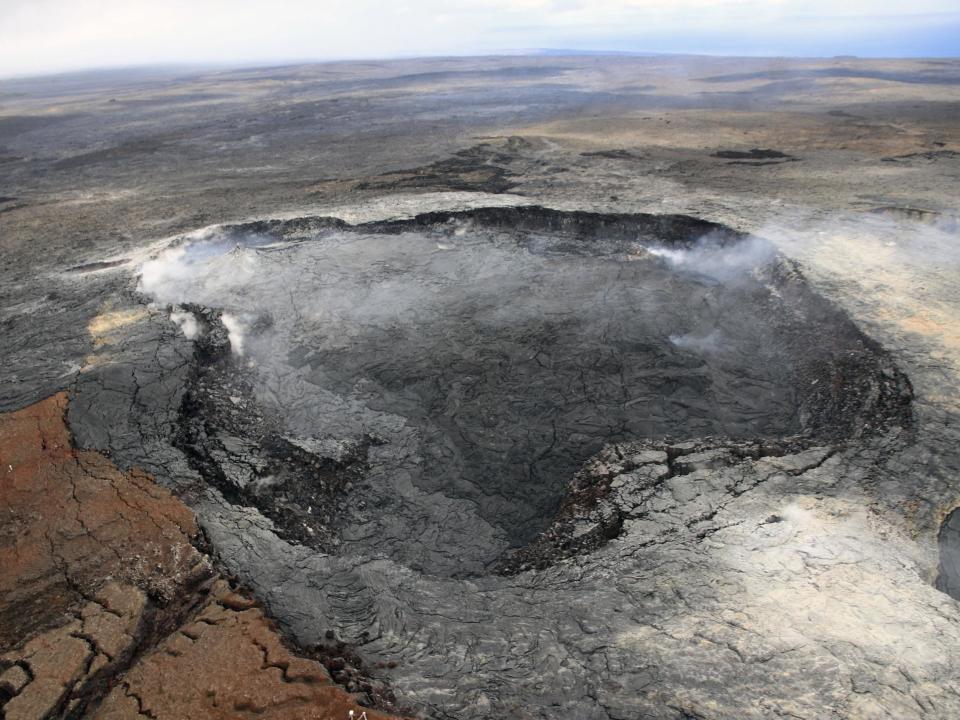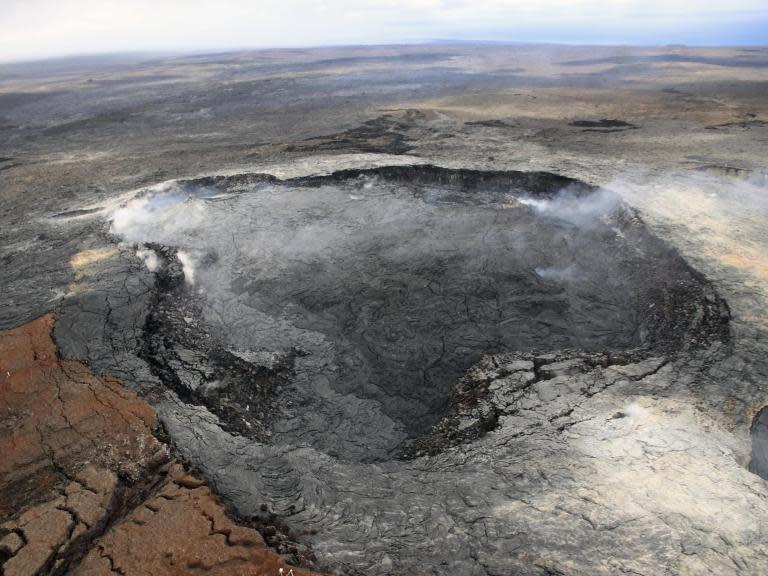Hawaii volcano could erupt after 250 earthquakes recorded in 24 hours
A Hawaiian volcano could be set to erupt after hundreds of earthquakes and the collapse of a crater floor.
Lava may burst through the ground east of Kilauea, the most active of the five volcanoes that form the state’s main island, geologists have warned.
Authorities urged the public to be on alert after scientists noted underground magma flowing beneath a main road near houses in the district of Puna.
More than 250 earthquakes have been detected since a crater floor collapsed at the Pu’u O’o vent in the shield volcano’s eastern rift zone earlier this week.
Most were minor but many were felt by locals, including one with a magnitude of 4.2, which shook the coast on Tuesday morning.
Scientists from the US Geological Survey’s Hawaiian Volcano Observatory (HVO) warned the seismic activity could lead to a lava breakout, although they could not say where or when.
The earthquakes and crater collapse sent an “intrusion” of lava into a new part of the volcano, said geologist Janet Babb.
“Magma has now migrated into a lower part of the east rift zone,” she said, adding there was concern that it was in a rift near Highway 130, a major road on the island.
There are homes in that area of Hawaii's Big Island and the road also leads to a popular access point where people can hike or bike into the lava viewing area.
The Hawaii County Civil Defence Agency issued an alert warning people in the area to monitor the situation and be prepared for the possibility of a new lava flow.
Spokeswoman Kanani Aton said the agency was “planning ahead for a worst-case scenario” by reviewing emergency plans and monitoring the activity.
Ms Babb said the activity has slowed significantly since a spike earlier this week but the threat level has not changed.
However, scientists are not sure if decreased seismic activity is an indication that the event is over or if it has just stalled before picking back up.
“That’s the unknown at this point," Ms Babb said. "Therefore we are still watching, we are watching very closely."
Geologists flew over the area in a helicopter and observed a layer of red ash covering the ground near the Pu’u O’o vent. The ash was spread throughout the area when the crater floor collapsed.
“The good news is that as they flew down the east rift zone they didn’t see any ground cracks or steaming that would suggest that the magma was coming near the surface,” Ms Babb said.
Most of Kilauea’s activity has been not been explosive, but an eruption in 1924 spewed ash and 10-tonne rocks into the sky, killing one man.
In 1983 an eruption of Pu’u Oo resulted in lava fountains soaring over 1,500 feet high. In the decades since, the lava flow has buried dozens of square miles of land and destroyed many homes.
In 2008, after a series of small earthquakes rattled the island, Kilauea’s summit crater opened and gushed lava and rock over 75 acres of the mountain, damaging a nearby viewing point.


